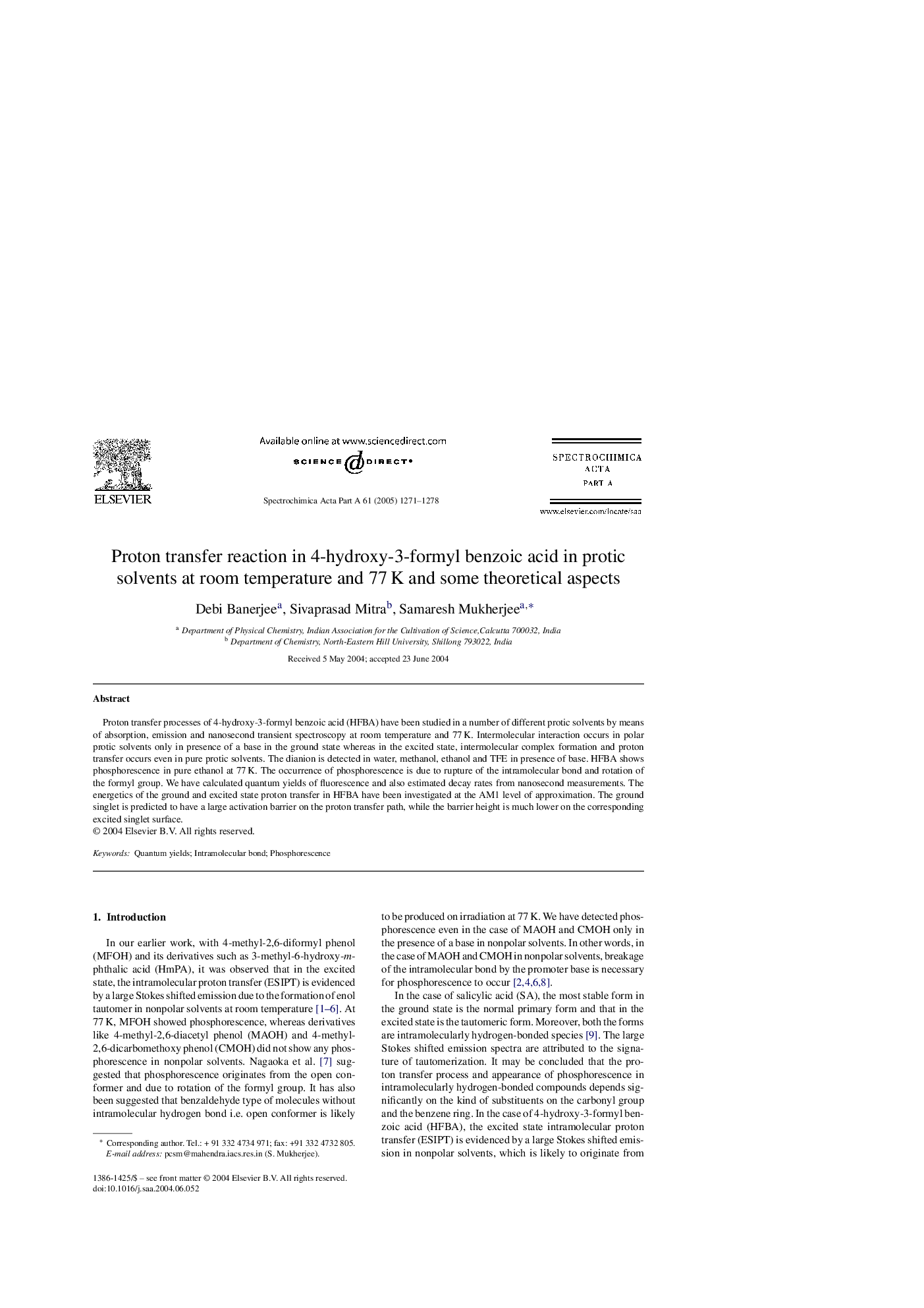| Article ID | Journal | Published Year | Pages | File Type |
|---|---|---|---|---|
| 10557420 | Spectrochimica Acta Part A: Molecular and Biomolecular Spectroscopy | 2005 | 8 Pages |
Abstract
Proton transfer processes of 4-hydroxy-3-formyl benzoic acid (HFBA) have been studied in a number of different protic solvents by means of absorption, emission and nanosecond transient spectroscopy at room temperature and 77Â K. Intermolecular interaction occurs in polar protic solvents only in presence of a base in the ground state whereas in the excited state, intermolecular complex formation and proton transfer occurs even in pure protic solvents. The dianion is detected in water, methanol, ethanol and TFE in presence of base. HFBA shows phosphorescence in pure ethanol at 77Â K. The occurrence of phosphorescence is due to rupture of the intramolecular bond and rotation of the formyl group. We have calculated quantum yields of fluorescence and also estimated decay rates from nanosecond measurements. The energetics of the ground and excited state proton transfer in HFBA have been investigated at the AM1 level of approximation. The ground singlet is predicted to have a large activation barrier on the proton transfer path, while the barrier height is much lower on the corresponding excited singlet surface.
Keywords
Related Topics
Physical Sciences and Engineering
Chemistry
Analytical Chemistry
Authors
Debi Banerjee, Sivaprasad Mitra, Samaresh Mukherjee,
